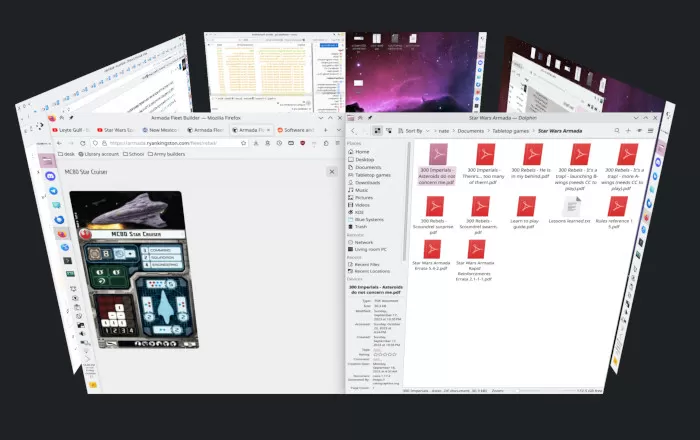- cross-posted to:
- linux_gaming@lemmit.online
- cross-posted to:
- linux_gaming@lemmit.online
Well known KDE developer Nate Graham is out with a blog post today outlining his latest Wayland thoughts, how X11 is a bad platform, and the recent topic of “Wayland breaking everything” isn’t really accurate.
“In this context, “breaking everything” is another perhaps less accurate way of saying “not everything is fully ported yet”. This porting is necessary because Wayland is designed to target a future that doesn’t include 100% drop-in compatibility with everything we did in the past, because it turns out that a lot of those things don’t make sense anymore. For the ones that do, a compatibility layer (XWayland) is already provided, and anything needing deeper system integration generally has a path forward (Portals and Wayland protocols and PipeWire) or is being actively worked on. It’s all happening!”



The wayland way to do that is to have the application be a compositor, they made sure that nesting introduces only minimal overhead. And that ties in with the base protocol being so simple: If you only need to deal with talking to the compositor you’re running on, and to the client that you want to embed, a wayland compositor is indeed very small and lean. Much of the codebase in the big compositors deals with kms, multiple monitor support, complex windowing logic that you don’t need, etc.
Oh and just for the record that doesn’t mean that you can’t undock the terminal: Just ask the compositor you’re running on for a second window and compose it there. You can in principle even reparent (client disconnecting from one compositor and connecting to the other) but I think that’s only standardised for the crash case there’s no standard protocol to ask a client to connect to another compositor. Just need to standardise the negotiation protocol, not the mechanism.